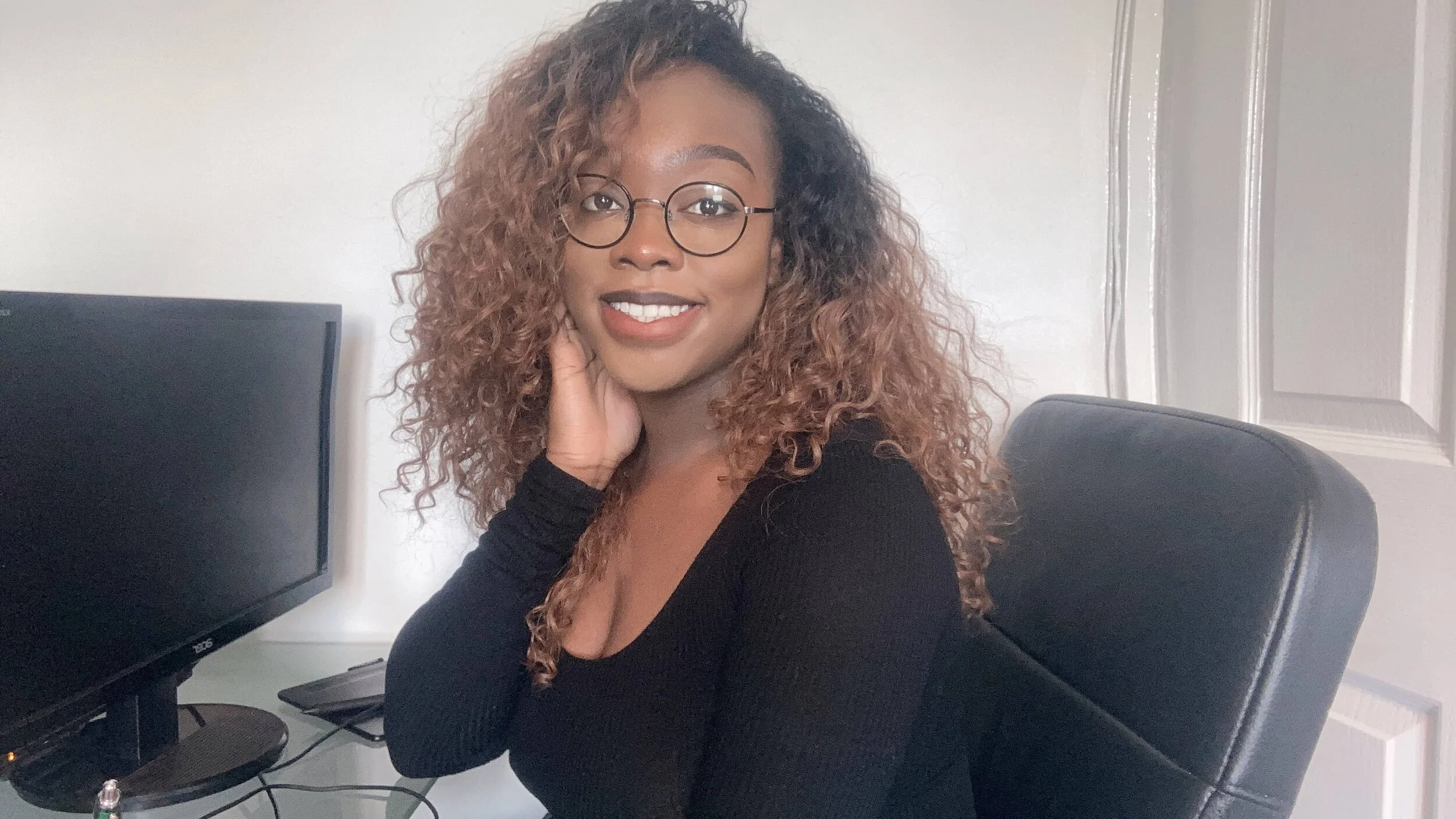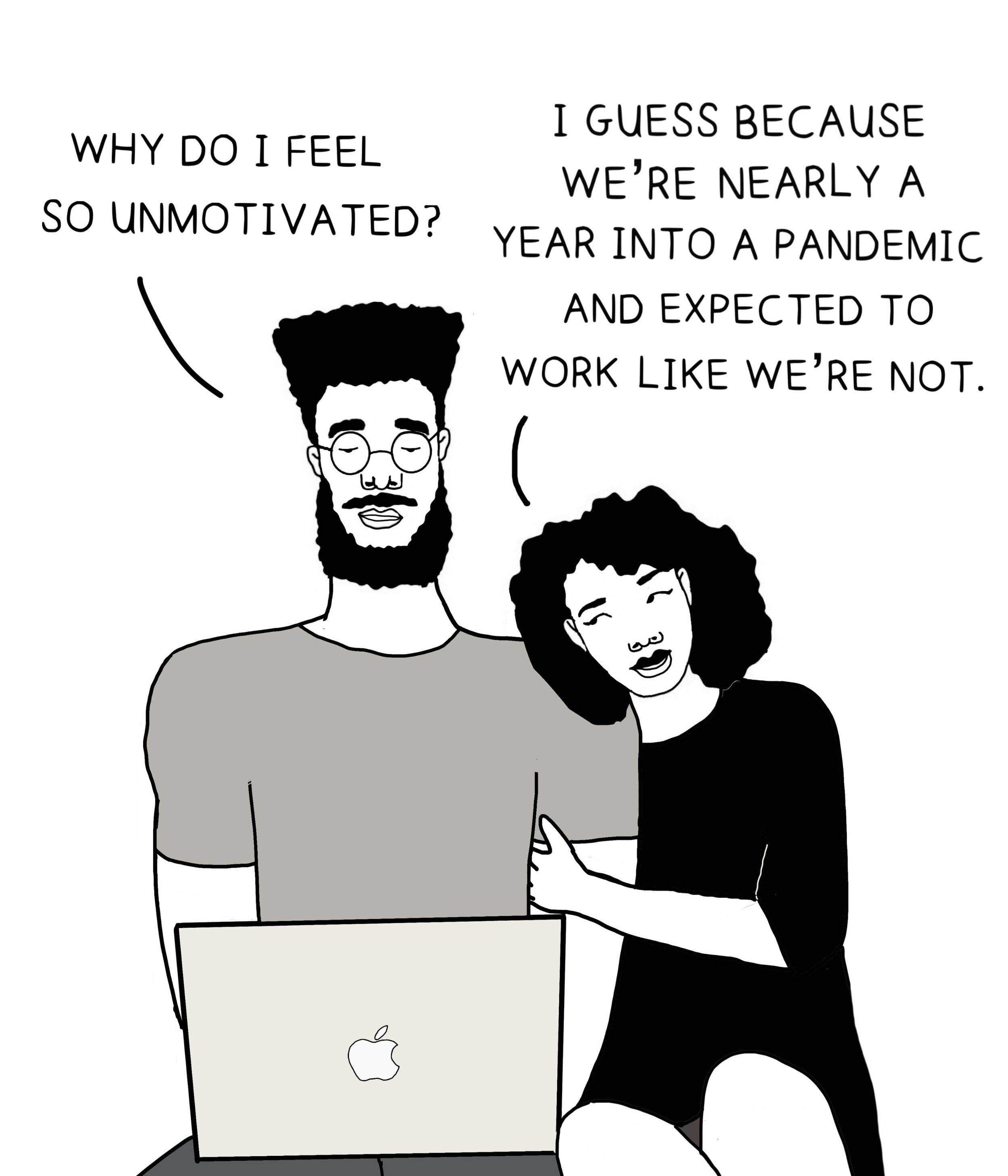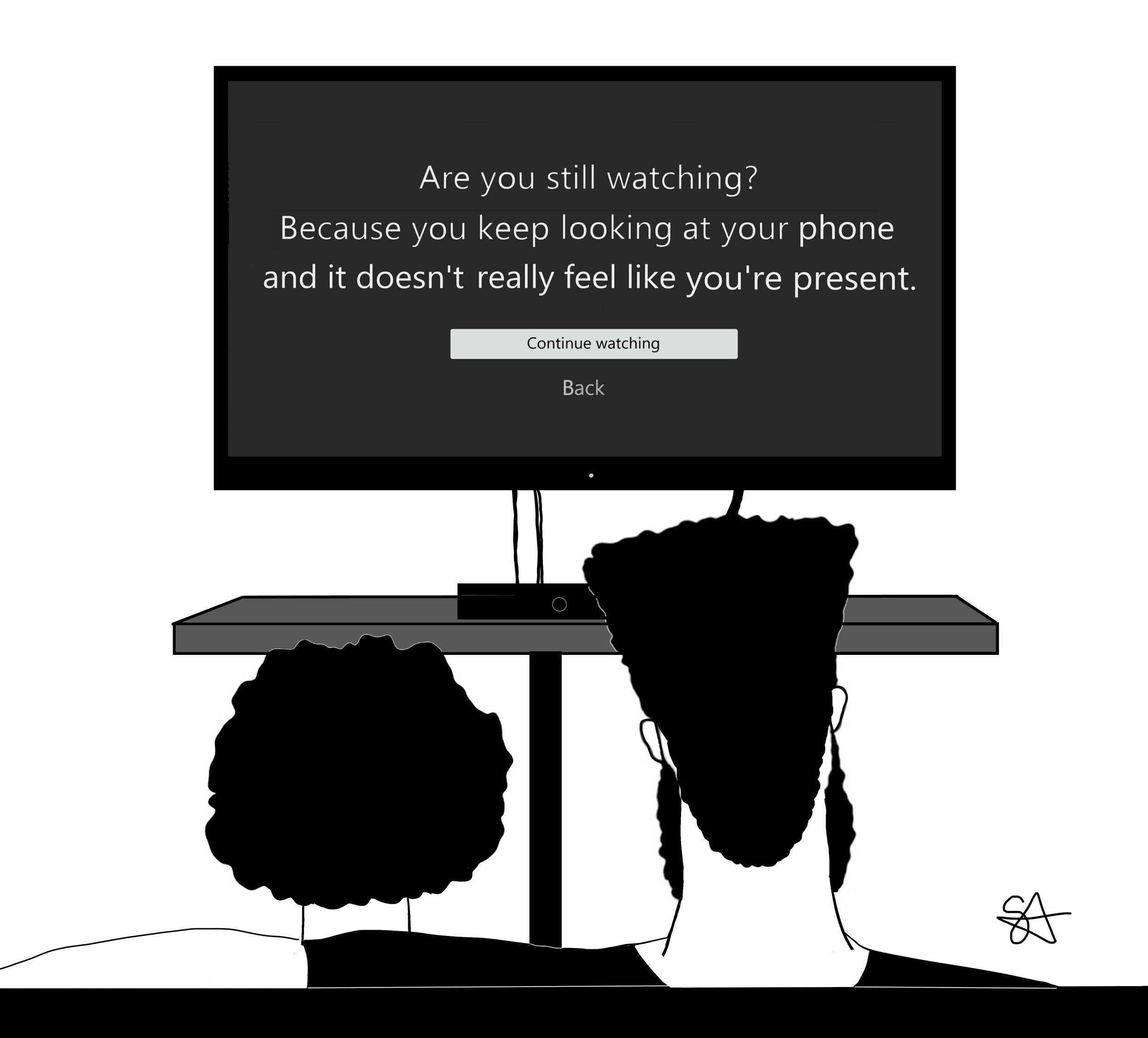Talking to: Sarah Akinterinwa
When she was growing up Sarah Akinterinwa always felt like an artist. As an adult, Sarah continued to pursue art as a hobby, then in the spring of 2020, amidst a pandemic and having recently been made redundant, she created the comic 'Oyin and Kojo,' showcasing single panel cartoons of a black-British couple's every day life. Two months later, the cartoon editor of The New Yorker magazine discovered her work and asked her to become a contributor. It was from then on that she became a regular cartoonist for them, and is now a full time artist, creating anything from logos to editorial illustrations.
Sarah spoke to us recently about the importance of creating a space for positive representation of Black-ness, specifically Black-Britishness, and how Oyin and Kojo being picked up by one of the biggest media outlets in the world has not only elevated important narratives around the everyday reality of being Black but given her the personal space to be more creative. Sarah also shares with us her favourite Black cartoonists and story tellers currently making waves.
Tell us a bit more about yourself; where are you based, what do you create, what do you do in your everyday life?
© Sarah Akinterinwa
I’m a freelance illustrator and cartoonist and I’m based in Kent. At the moment, my days consist of waking up early, making a to-do list of all the cartoons and illustrations I have to do for clients and slowly working through them. In between tasks, I do an Oyin and Kojo single-panel cartoon for Instagram which is kind of a little break from all the serious work.
Have you always been creative? Tell us about how you got into being creative growing up?
From a very young age I’ve been creative. I always loved to draw and make up characters and storylines to go along with them. When I was teenager, if I wasn’t drawing, I would channel all my creativity into playing Sims. When it came to university and thinking about my future aspirations, my culture and upbringing didn’t encourage a creative career or really nurture my passion. As a result, I turned my art into a hobby. Eventually, I got extremely bored with my non-creative job and decided I wanted a creative job. I think I was just born to create art and it would never feel right to do anything else.
Oyin and Kojo being picked up by The New Yorker was your big break - tell us how this came about.
In April 2020, during the first UK lockdown, I was made redundant, bored, and quite miserable, which I imagine many people can relate to. I decided to keep myself busy by working on this comic idea I’d had on the back burner for a long time. It was about a black British couple’s everyday life. I named them Oyin and Kojo and I committed to doing one cartoon per day for Instagram, with no big goals or hopes of it being picked up. It was honestly so much fun and reminded me of why I loved to draw and story-tell so much. One day, Emma Allen, the cartoon editor of the New Yorker magazine, DM’d me on Instagram and told me she wanted me to be a contributor. It changed my life for the better and is the reason I can now draw for a living.
Your work makes a space in the mainstream for positive, everyday Black representation. Tell us more about this and why doing this is so important to you.
My goal for Oyin and Kojo was to showcase black love and improve the dialogue about relationships between cis-het and men and women. There is very little representation of healthy black-British fiction and non-fiction couples. I wanted to show people that it exists and should be celebrated. I also wanted a platform to talk about everything related to blackness, specifically black British-ness. Additionally, I want to show the world that while we are extraordinary, we are also very ordinary. I think this is why people of all races and walks of life message me to say how much they relate to Oyin and Kojo. When I see these messages, I think, ‘Great! That’s because they’re meant to reflect normal people.’
© Sarah Akinterinwa
What do you think needs to be done by allies to promote diversity, both in wider society and in the art world?
I think that allies should use their privilege to elevate underrepresented creatives. If you have a platform, use. If you have a space or an opportunity, consider how someone from a marginalised group can benefit from that space or opportunity. Many allies talk about how they can’t find diverse talent. Some of us don’t have the funds, education, or connections to get in front of them. I think allies should start actively seeking out creatives and presenting them with opportunities they wouldn’t otherwise have the privilege of being aware of.
Who are you influenced by?
Some of my biggest influences are artists such as Amanda Oleander who illustrates Love Every Day. There’s also the incredible story teller and producer Issa Rae who for many years has told several black love stories in her own realistic and compelling way. I’m also inspired by Liz Montague, Akeem Roberts, and Yasin Osman, three incredible black New Yorker magazine cartoonists who humorously share snippets of blackness in their cartoons. Of course, I’m forever inspired by my own love life, identity, and the stories of others unfolding around me.
What is coming up next for you?
I am working on a number of amazing projects that I can’t talk about just yet. I’m so excited and already grateful for what the future holds. I can’t wait for Oyin and Kojo to reach even more people!











